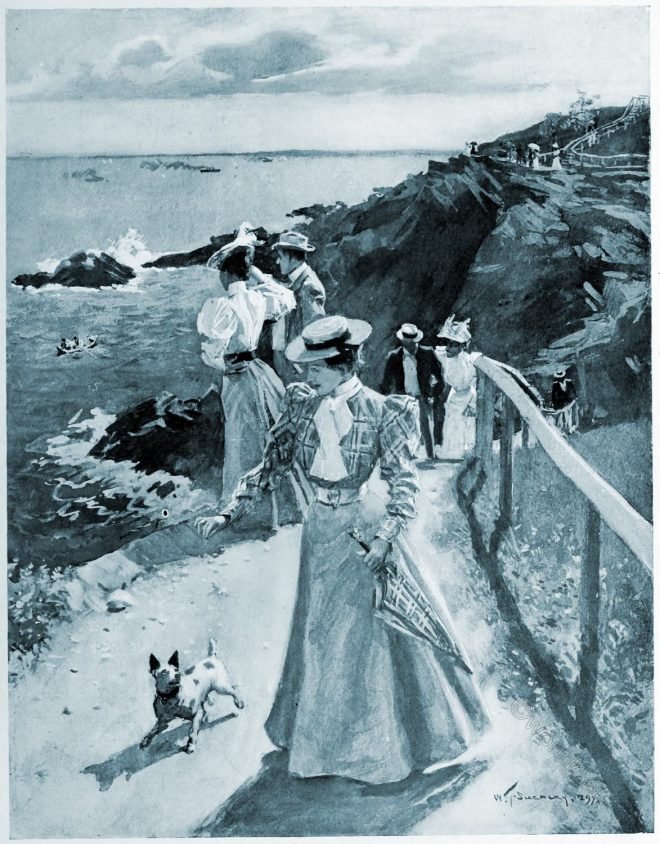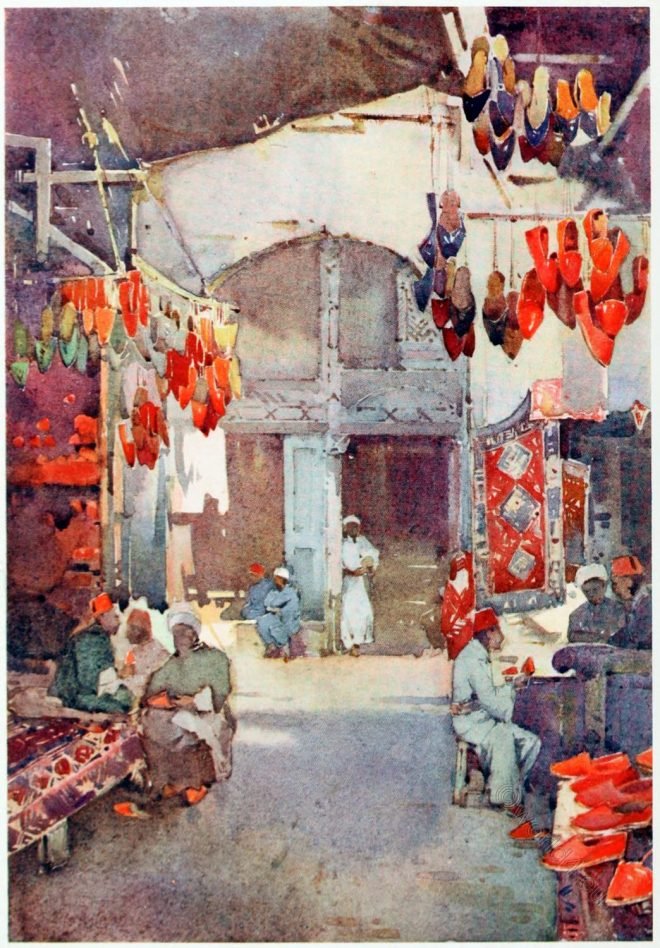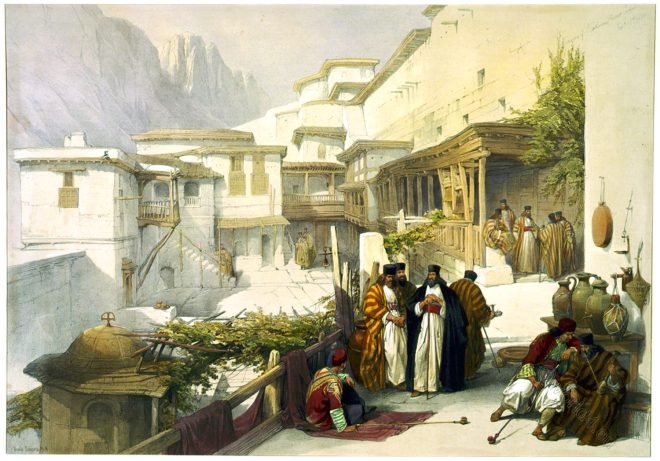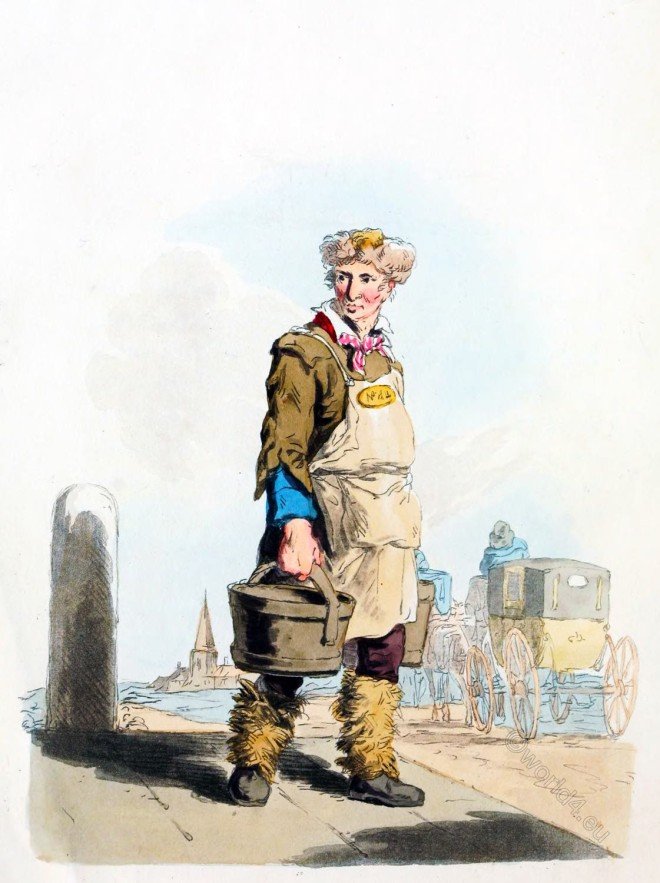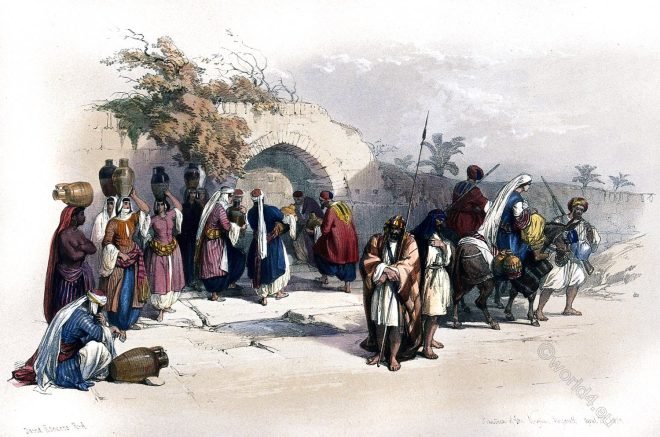This place was famous in the olden time as one of the favorite haunts of the great sea-serpent.
The souk or bazaar in oriental cities.
Souks are an almost universal feature of an oriental Arab city and usually also its economic centre.
Principal court of the convent of St. Catherine, Mount Sinai.
The costume of the Monks of St. Catherine. The Superior is distinguished by a black cloak, the Brotherhood wear robes of the striped brown cloth.
Royal gloves of Henry VIII. Tudor King of England.
One of the most beautiful pair of gloves probably in existence, and fortunately in a fine state of preservation.
Samaria the ancient Capital of the Kingdom of Israel.
Group of horseriders on a plateau overlooking a landscape with the city of Sebaste, formely Samaria.
View of a waterman to a coach stand, carrying two pails of water.
At every stand for hackney-coaches in the metropolis, there is one or more persons termed watermen, whose occupation is to attend to the horses.
Anglo-Saxon dress, ornaments and relics of gold and bronze.
The great love of the Saxons for display in dress and ornament led to a very, remarkable development of artistic skill in fashioning and decorating articles of jewelry, which were worn by men in greater profusion than by women.
Constance of Castile, Duchess of Lancaster with horned head-dress.
Constance of Castile (1354 – 24 March 1394) the second wife of John of Gaunt Duke of Lancaster with horned head-dress.
The Fountain of Mary or Virgin Fountain at Nazareth.
The figures introduced were all drawn on the spot, and convey an accurate representation of the female costume of Nazareth.
Orders of monks and nuns. Historical religious habit of the Orient.
These oriental monastic and nun’s habit date back to the earliest times of Christianity.

